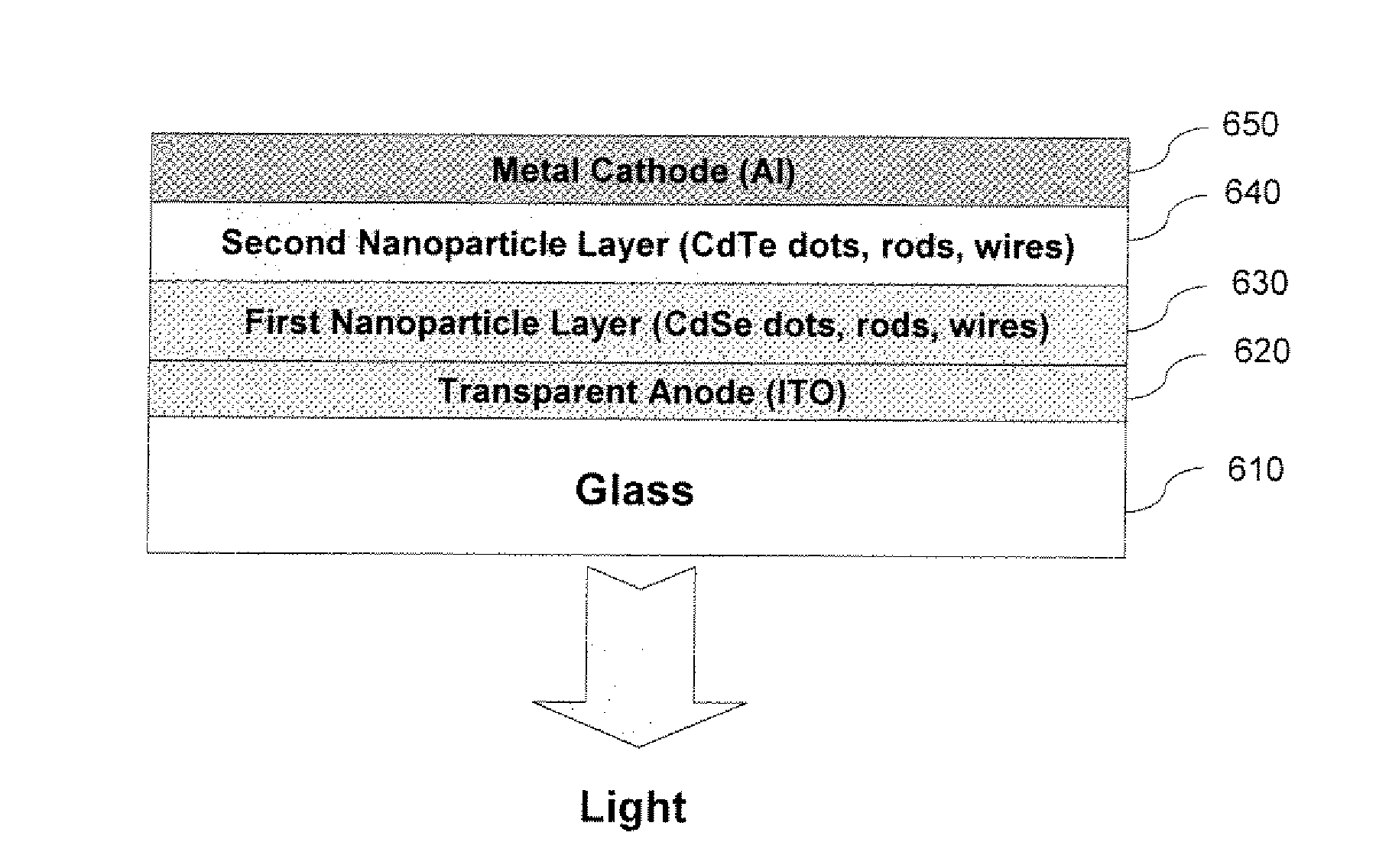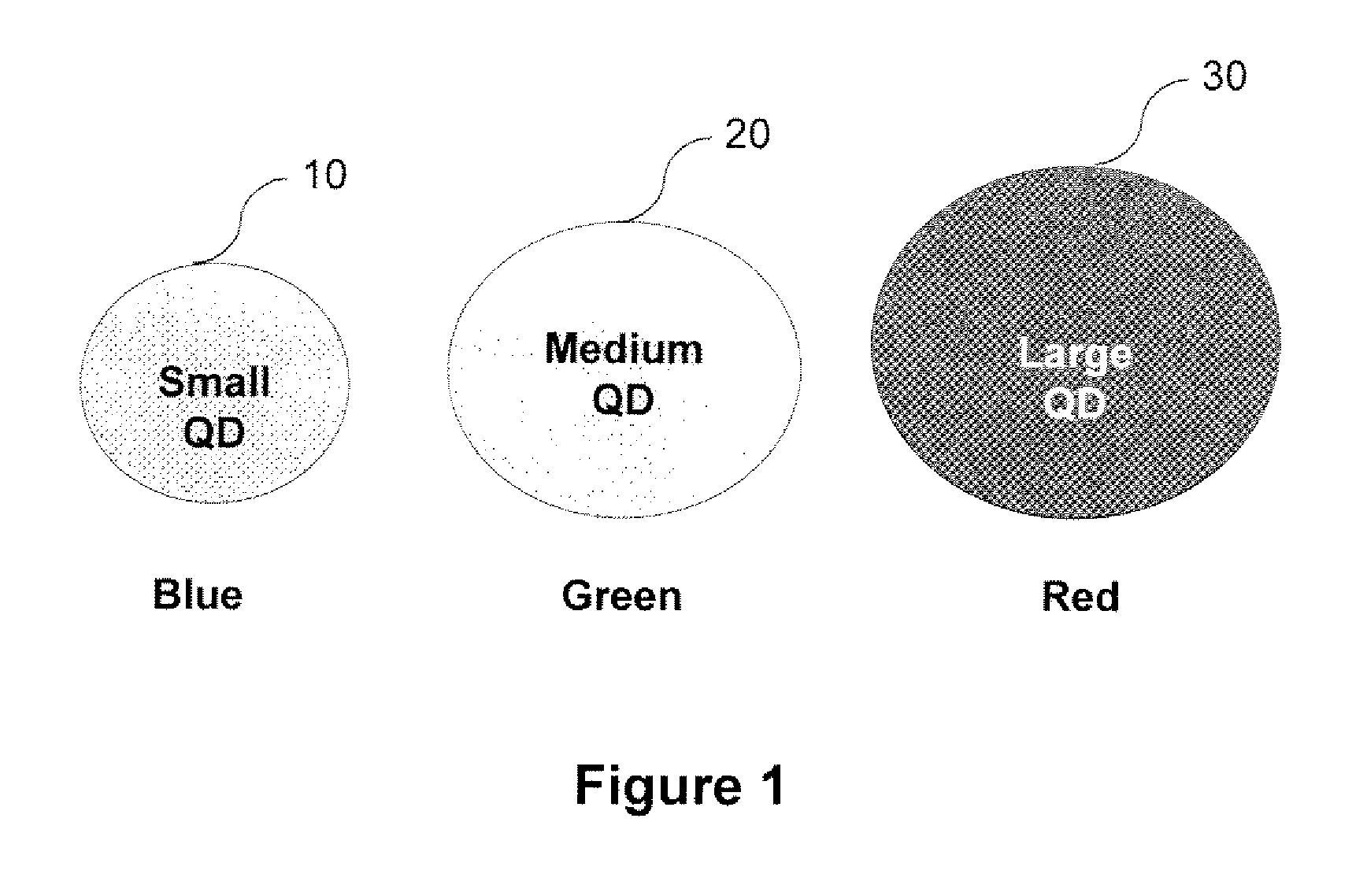Nanostructured electroluminescent device and display
a technology of electroluminescent devices and nanostructures, applied in the direction of discharge tube luminescnet screens, natural mineral layered products, transportation and packaging, etc., can solve the problems of short life of oleds, loss of color balance, and several material-based and manufacturing process-dependent problems, so as to improve efficiency and reduce display life , the effect of improving efficiency
- Summary
- Abstract
- Description
- Claims
- Application Information
AI Technical Summary
Benefits of technology
Problems solved by technology
Method used
Image
Examples
example 1
[0041] A nanostructured electroluminescent device is shown in FIG. 6, a transparent conducting layer ITO 620 is deposited on glass substrate (610) by following methods well known in the art. The surface of the ITO can be exposed to plasma treatment or other processes well known in the art to adjust the work function of ITO. A first charge conducting nanoparticle layer (630) is then deposited on the ITO layer. Spin coating or ink-jet printing or other printing process can be used to deposit nanoparticles dispersed in a suitable solvent. A continuous pin hole free nanoparticle layer can be obtained by heating the substrate to about 200 C for about 15 minutes to drive off the solvent. The nanoparticles in layer 630 can be dots, rods or wires. The first nanoparticle layer in this embodiment is made from CdSe. Second nanoparticle layer (640) is deposited directly on top of the first nanoparticle layer (630). Spin coating or ink-jet printing or other printing process can be used to deposi...
example 2
[0042] Another embodiment of a nanostructured electroluminescent device is shown in FIG. 7. A transparent conducting layer ITO (720) is deposited on glass substrate (710). As described in Example 1, a hole injection layer (730) such as aluminum oxide is deposited on lTO layer 720 by the methods known in the art. The first and second nanoparticle layers (740 and 750), are then deposited as described in Example 1. An electron injecting layer (760) such as LiF is then deposited on top of the second nanoparticle layer by methods well known in the art. An Aluminum metal electrode (670) is deposited on top of the second nanoparticle layer to complete the nanostructured electroluminescent device.
example 3
[0043] Another embodiment of a nanostructured electroluminescent display shown in FIG. 8. The ITO hole injection and first and second nanoparticle layers are formed as described in Example 2. A hole blocking layer made of TiO2 (860) is deposited on top of the second nanoparticle layer by the methods well known in the art. An electron injecting layer (870) such as LiF is then deposited by methods well known in the art and an Aluminum metal electrode (80) is deposited on top of the second nanoparticle layer to complete the nanostructured electroluminescent device.
PUM
| Property | Measurement | Unit |
|---|---|---|
| Thickness | aaaaa | aaaaa |
| Electrical conductor | aaaaa | aaaaa |
| Electric potential / voltage | aaaaa | aaaaa |
Abstract
Description
Claims
Application Information
 Login to View More
Login to View More - R&D
- Intellectual Property
- Life Sciences
- Materials
- Tech Scout
- Unparalleled Data Quality
- Higher Quality Content
- 60% Fewer Hallucinations
Browse by: Latest US Patents, China's latest patents, Technical Efficacy Thesaurus, Application Domain, Technology Topic, Popular Technical Reports.
© 2025 PatSnap. All rights reserved.Legal|Privacy policy|Modern Slavery Act Transparency Statement|Sitemap|About US| Contact US: help@patsnap.com



